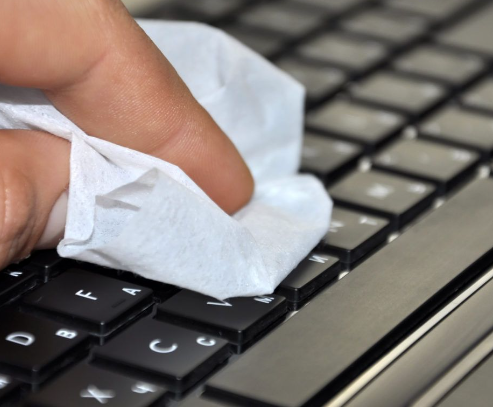How clean is your keyboard?
…and how much does it matter?

“the average keyboard has over 3,000 bacteria per square inch!”
Considering that the average desk, when tested, had more germs than a toilet seat, it doesn’t come as a great surprise.
If anything, these numbers illustrate just how hard it is to avoid germs and viruses in our everyday activities. But it is worth trying, here are a few ways to drastically lower the germ count in your work environment:
1. get rid of the clutter on your desk - while this doesn’t actually lower the bacteria count, it gets rid of great hiding places for these contaminants. You’ll be much more likely to grab a wipe and take a sanitizing swipe when the clutter is gone.
2. make sanitized wipes a permanent part of your desktop – I won’t get into the numbers of bacteria that were found in this study, nor where they came from. Just believe that you don’t want any of these germs in or near your eyes, nose, or mouth. Use the wipes on anything you can reach. Pick a scented wipe for a little DIY aroma therapy.
3. keep hand sanitizing gel on your desk - make it accessible and encourage sharing. Use both gel and wipes? Your call.
4. be personally responsible – When you are working at eliminating bacteria, we are all in this together. It is a “we” situation. What you do as an individual counts. Whatever you touch, you are likely to be picking up a contaminant and just as likely to be leaving another behind. So make good sanitary technique a habit.
Those are the basics on the desktop.
Now we can return to the keyboard. It’s a good place to start since it probably gets the most touches in any given day.
First, disconnect it from your computer. Start with a damp micro fiber cloth (avoid any harsh chemicals which could damage the coating that keeps the numbers and letters from being wiped away). If you need a little more moisture, give it a spritz with a specially formulated screen cleaner.*
Depending on your office environment you may see a collection of crumbs and dustballs hiding down between the keys. There are a couple effective ways to get at the larger stuff – turn the keyboard over and shake it or use the dust attachment of your vacuum to pull it out. Blowing it away with compressed air will work as well.
Once the heavy stuff is gone, it’s time to sanitize. DO NOT use a spray sanitizer. Lysol or Chlorox wipes are ideal. Stroke smoothly across the keys, depressing them slightly as you go. Use another microfiber cloth to wipe away any excess moisture.
Ok! You have gotten your keyboard clean and sanitized. But, you are not done. Nor will you ever be. Remember, we are going to make “clean and sanitized” a habit. Now that you have sanitizer in hand, go right to work on all the other “high-touch” objects on your desk…phone, stapler, drawer handles, all switches and buttons. (My dentist offers unused "clean pens" at the reception desk.)
Don’t forget your cell phone or your laptop’s touch screen.
The NLC Team
Don't hesitate to call us about a cleaning question - (908) 753-3900
*Packaged cleaners can be relatively pricey. Make your own using a mix of 30% rubbing alcohol and distilled or filtered water. (For dried on gunk, increase the alcohol but don't exceed 50%.
